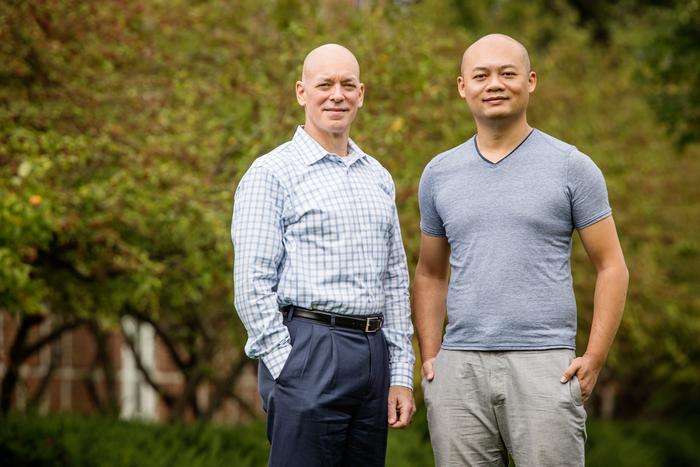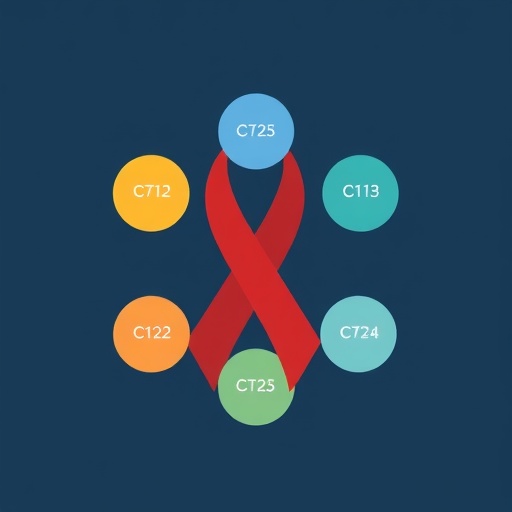
A groundbreaking study has revealed a compelling link between urban green spaces and the incidence of fatal police shootings, a connection never before documented with this level of detail. Conducted over a five-year period, the research analyzed data from more than 3,100 U.S. counties, uncovering that areas with abundant greenery experienced significantly fewer deadly encounters involving law enforcement officers. This discovery offers a new lens through which to view the multifaceted benefits of green environments, extending beyond individual health and urban aesthetics to encompass public safety and social equity.
The study’s interdisciplinary team included prominent figures such as William Sullivan, a landscape architecture professor at the University of Illinois Urbana-Champaign, and Bin Jiang, a professor at the University of Hong Kong who earned his doctoral degree at Illinois. Their collaboration bridged expertise in landscape architecture, social science, and data analytics, ensuring a robust and nuanced approach to the research questions. The study was published in the prestigious journal Environment and Behavior, signaling its academic significance and potential policy implications.
Researchers focused on exploring whether the presence and quality of green spaces could be inversely associated with fatal police shootings, while also accounting for varying degrees of social deprivation across counties. Social deprivation measures comprised a composite of factors such as poverty, single-parent households, education levels, housing conditions, car ownership, and employment status. These variables were critical to contextualize the findings within the broader social and economic landscape of American communities.
Initial skepticism regarding the possibility of this association quickly gave way to compelling statistical evidence. Analysis confirmed a consistent negative correlation between levels of vegetation and fatal police shootings, a relationship that was even more pronounced in communities facing higher social and economic hardships. This suggests that green spaces may serve as an equalizing force, conferring protective effects upon the most vulnerable populations.
To explain these findings, the research team hypothesized several mechanisms by which greenery might reduce violence. First, green spaces are renowned for their capacity to decrease overall crime rates, an effect attributed to improved mental well-being and increased outdoor social interactions. Second, exposure to nature has been shown to accelerate recovery from stress and enhance cognitive functioning, factors that could influence both civilians’ and officers’ behavior during potentially volatile encounters.
Sullivan emphasized the role of mental states, highlighting that stress, fatigue, and impaired impulse control can escalate tensions and potentially contribute to violence. Greener environments, by fostering psychological restoration and a calmer atmosphere, may enable police officers to better engage in de-escalation tactics and apply their professional judgment with more clarity and patience. This is a particularly poignant insight into how environmental design can shape critical moments of human interaction.
Furthermore, the study recognized that green spaces often promote stronger community bonds and informal social surveillance, which are crucial elements in maintaining neighborhood safety. When residents spend more time outdoors amidst well-maintained vegetation, their increased visibility and connectivity foster a collective sense of responsibility and can deter criminal activities. This social cohesion could indirectly mitigate the circumstances that lead to fatal police incidents.
However, the researchers cautioned that not all greenery is beneficial. In some areas, vegetation can become territorial grounds for gangs or create hidden zones where illicit activities go unchecked. Thus, the quality, maintenance, and design of green spaces are as important as their presence. Urban planners and policymakers should consider how green infrastructure is implemented to avoid unintended negative consequences.
The research team underscored that while enhancing urban greenness appears to be a promising strategy for reducing violence, it cannot serve as a standalone solution. Addressing systemic issues within the criminal justice system, reforming law enforcement practices, and investing in community policing remain essential for meaningful reductions in police violence. Green spaces are part of a larger ecosystem of interventions that collectively support safer, healthier neighborhoods.
Future research directions include expanding the dataset to capture non-fatal police shootings and other forms of law enforcement encounters, addressing underreporting issues prevalent in official records. Additionally, disentangling individual-level versus community-level effects could further clarify how green spaces interact with complex social dynamics to influence violent outcomes.
City planners, landscape architects, and real estate developers are encouraged to leverage these findings in their efforts to create greener, more equitable urban environments. Simple, cost-effective interventions such as converting vacant lots into parks or community gardens could act as catalysts for broader social improvements. This research provides empirical grounding for advocating green infrastructure investments as part of public safety and social well-being strategies.
According to Jiali Li, the doctoral student who managed the project and conducted the main data analyses, “Adding green cover may be one of the least expensive interventions available to a community seeking to reduce violence.” This statement resonates powerfully as cities grapple with limited resources yet strive to address profound social challenges.
In conclusion, the linkage between greenness and reduced fatal police shootings reveals an unexpected but vital role for environmental stewardship in shaping safer communities. It calls for an integrated approach that combines urban design, mental health promotion, social justice reforms, and community empowerment. As cities worldwide face mounting pressures, incorporating green spaces into the fabric of urban life may offer a hopeful pathway to diminishing violence and enhancing quality of life.
Subject of Research: People
Article Title: Greenness, Deprivation, and Fatal Police Shootings: A Five-Year Nationwide Study in the United States
News Publication Date: 19-Feb-2025
Web References: http://dx.doi.org/10.1177/00139165251316106
Image Credits: Photo by L. Brian Stauffer/University of Illinois Urbana-Champaign
Keywords: green space, police violence, fatal shootings, social deprivation, urban planning, mental health, crime reduction, community safety, environmental design
Tags: benefits of green areas in urban settingscollaboration in environmental researchconnection between greenery and police violencedata analysis in social science researcheffects of green environments on law enforcementfatal police shootings and environmental factorsimpact of vegetation on crime ratesimplications of green space on community healthinterdisciplinary research on urban planninglandscape architecture and community safetysocial equity and green spacesurban green spaces and public safety





